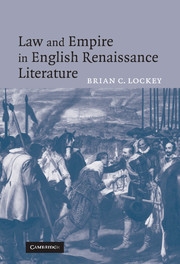Introduction: Romance and the ethics of expansion
Published online by Cambridge University Press: 22 September 2009
Summary
On November 10, 1580 at the Golden Fort in Smerwick on the coast of Ireland, Lord Deputy Arthur Grey of Wilton ordered his troops to execute 600 Italian and Spanish soldiers who had just surrendered. These continental soldiers had recently occupied the fort in order to assist the Earl of Desmond's rebellion against English rule. Reporting to Queen Elizabeth, Lord Grey later wrote that, after the surrender, he purposefully sent into the fort “certain bands, who straight fell to execution. There were 600 slain.” According to the official report to Sir Francis Walsingham, “all the Irish men and women [were] hanged, and four hundred and upwards of Italians, Spaniards, Biscayans, and others put to the sword.” The slaughter occurred despite the fact that, according to many witnesses and popular tradition, the Italian commander negotiated an agreement with Lord Grey under which his soldiers would be taken alive and ultimately allowed to return safely to Spain.
One way of viewing this atrocity is that it was one unremarkable massacre in a long series of such episodes that comprised the “scorched-earth” strategy that Grey employed to put down the Earl of Desmond's rebellion. Even so, contemporary standards on military discipline were quite clear in prohibiting the execution of prisoners of war. Such standards point to the existence of a distinction between real warfare and its ideal or juridical incarnation, a distinction found throughout European thought during the Renaissance.
- Type
- Chapter
- Information
- Law and Empire in English Renaissance Literature , pp. 1 - 14Publisher: Cambridge University PressPrint publication year: 2006



